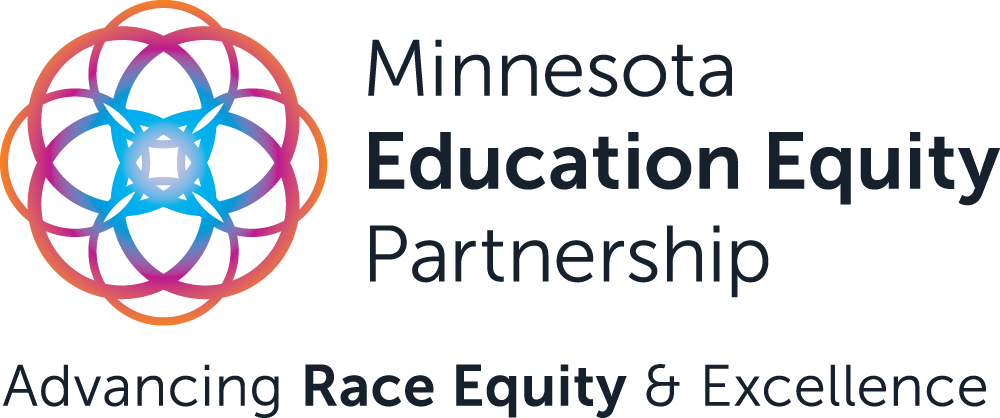
Latest Census data for Minnesota shows urgent need for building racial equity in education
The 2020 U.S. Census figures are out, and they tell an important story of a shifting Minnesota, and of the need to advance racial equity for our growing number of students of color and American Indian students.
In Minnesota, the white population in Minnesota is 76.3%, down from 83.1% in 2010, while there was growth in racial and ethnic communities across the state. And what’s really telling about our state’s future: Nationwide, there is now no national majority racial or ethnic group for people younger than 18.
The U.S. Census captures population demographics to determine important political determinations such as political redistricting, federal resource allocation, and overall shifts in community dynamics and representation.The data also has important determinations for our schools, and what funding and resources are needed to support Minnesota’s changing racial and ethnic demographic.
The latest data makes it clear: An increasingly diverse and multilingual state points to the critical need for building racial equity policy, practices, and narratives that support educational excellence for students of color and American Indian students and ensure all students are prepared to succeed in a multiracial and multicultural future.
Here’s what that means, and how we can work together to build meaningful transformation in education and build a more prosperous Minnesota.
Racial and ethnic communities drive population growth
The 2020 U.S. Census data is showing rapid growth of racial and ethnic populations in the U.S., creating a more diverse nation. Nearly all groups saw population gains, and a specific “two or more races” category rose by 276% since 2010. (Census.gov).
Here are some more specific numbers related to groups of racial and ethnic communities nationwide:
- Hispanic/Latino population grew from 50.5 million (16.3% of total U.S. population) in 2010 to 62.1 million (18.7% of the total U.S. population). An important note, slightly more than half of the total population growth nationwide between 2010 and 2020, came from the Hispanic/Latino population.
- Black/African American population now accounts for 41.1 million people (or 12.4%) of the U.S. population. This figure is just lower than the last count of 38.9 million (or 12.6%) from 2010. However, an additional 5.8 million U.S. Census takers reported identifying as Black/African American in combination with another racial category. Bringing the combined total to 46.9 million or 14.2% of total U.S. population identifying as Black/African American.
- Asian American population now accounts for 24 million people in the U.S.
- American Indian and Alaska Native population (alone or in combination) account for 9.7 million people in the U.S.
- Native Hawaiians and Pacific Islanders category (alone or in combination) account for 1.6 million people in the U.S.
There is now no national majority racial or ethnic group for people younger than 18. The non-Hispanic white population in that age group went from 53.5% to 47.3% across the United States.
Minnesota is becoming more diverse
For Minnesota, the white population decreased from 83.1% to 76.3% in 2020, while there was growth in the state’s racial and ethnic communities.
- Hispanic/Latino population in Minnesota grew from 4.7% to 6.1%.
- Black/African American population in Minnesota grew from 5.1% to 6.9%
- Asian population in Minnesota grew from 4.0% to 5.2%.
- American Indians are still at 1% of the total Minnesota population. Mahnomen county, where the White Earth Reservation is located, shows 41.7 % of the population is made up of Native Americans. The only county where whites are not the majority.
- The category of “two or more races” went up from 1.9% to 4.1% in Minnesota
Implications for racial equity in education policy and practice
Reinforcement of Civil Rights in Education Protections
With more racial diversity comes the need to reinforce human and civil rights protections of the racial and ethnic communities that the law serves to protect. Teachers, school administrators. and school boards should familiarize themselves with distinct protections under the Civil Rights in Education that U.S. laws encompass.
Two examples are the legal protections for English Learners and Immigrant students.
English learner students (of which there are many within the Minnesota Latino, Asian, and African communities) are protected by federal Equal Education Opportunities Act (EEOA) of 1974.
This enforces state education systems to ensure access and equal opportunity for everyone, including rules to remove any language barriers that could get in the way of EL students’ learning and success.
We encourage school leaders to do a “policy check-up” on how your district is serving EL students equitably, with resources such as Learning for Justice.
Immigrant students are also protected in Civil Rights law. Regardless of documentation status, all immigrant youth have legal rights to a K-12 education.
The case Plyler v Doe ensured this legal right. To find out more about pledging to support immigrant students’ right to education, visit NEA Justice.
A more diverse teacher and staff workforce is vital to student success
A more diverse community will require that our teacher and school staff workforce better represent all of the racial and ethnic diversity of our communities.
Studies show that having a teacher of color, for specific groups of students, means greater success for that student population. Researchers from John Hopkins University and American University found that Black students who have one Black teacher by 3rd grade, were 13 times more likely to attend college. When that increases to two Black teachers—students are 32% more likely to attend college.
Along with academic impacts, having a diverse teacher workforce means that the insights into cultural dynamics for distinct communities, such as Latinx families or Hmong families, are known by teacher leaders of a school district.
Too many school districts depend primarily on cultural outreach workers and aides to understand distinct cultural nuances.
It’s time for the licensed teachers to have that innate knowledge on cultural dynamics for school success.
Representation matters— and having a diverse teacher and staff of color workforce will only build on the new Census shifts – to build more successful education school communities and prosperity and growth for society.
Teaching of ethnic studies, history of race, power & racism, and healthy racial dynamics is crucial
A more diverse student population nationwide and in Minnesota specifically means the need to center the voices, stories, and contributions of those communities in our school curricula.
Omitting the stories and contributions of communities of color and omitting Ethnic Studies is a form of instilling lies—hiding the truth and historical facts that all students must learn from their educational experiences in order to receive a full and comprehensive education.
Even prior to such a growth of racial and ethnic populations, as seen through the Census, the history of race and power and discussions of racism were vital for students to properly understand systemic racism and how ideologies and actions have resulted in discrimination and human rights violations throughout time. And with the new Census figures, and increasingly diverse school communities – only through the understanding of systemic racism and the systemic and individual perpetuation of such systems can we work towards healthier racial dynamics between groups.
The way to end racism is not to ignore it—but to understand it. Understanding racial dynamics must be done deliberately through school curricula, dialogue exercises across cultural groups, guest speakers series, and other opportunities.
There is no doubt that demography is destiny. The 2020 Census figures for the U.S. show a rapidly changing racial and ethnic make-up of the country, and Minnesota in particular is seeing school communities shifting to include more language diversity and cultural ways of knowing.
Centering racial equity frameworks, policies, practices, and narratives will not only enhance what these shifts mean to public school education, but will bring the quality and equity for communities to thrive and prosper.

